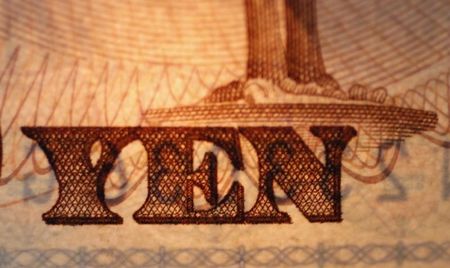Asia FX weak as Fed jitters grow, yen stalls after suspected intervention
2024.04.30 00:22

Investing.com– Most Asian currencies fell on Tuesday as anticipation of a Federal Reserve meeting this week kept traders largely biased towards the dollar, with the Japanese yen falling slightly after rebounding amid suspected government intervention.
Most regional currencies were nursing losses through April as traders steadily priced out expectations of early interest rate cuts by the Fed. A series of hotter-than-expected U.S. inflation readings drove this notion.
The and both rose about 0.3% in Asian trade, as investors positioned for the . The central bank is expected to keep rates steady, but could potentially offer hawkish signals in the wake of sticky inflation readings.
Fears of higher-for-longer U.S. rates put the dollar on course for a 1.3% gain in April.
Japanese yen softens, USDJPY rises after tumbling from 160
The pair, which gauges the amount of yen required to buy one dollar, rose 0.3% to about 156.80 on Tuesday.
The pair had fallen sharply from 34-year highs above 160 on Monday, sparking speculation that the Japanese government had intervened to buoy the yen. Traders said it appeared that the new line in the sand for the Japanese government was USDJPY at 160.
While the government gave no official word on the intervention, the yen rebound came after a series of verbal warnings from Japanese officials over the past month.
Mixed Japanese data factored into the yen’s weakness on Tuesday. While rose more than expected in March, missed expectations by a wide margin, presenting a muted outlook for consumer spending and inflation.
3rd party Ad. Not an offer or recommendation by Investing.com. See disclosure here or
remove ads
.
The yen was the worst performer in Asia through April, with the USDJPY pair up nearly 4%.
Australian dollar sinks as weak retail sales dent rate outlook
The Australian dollar was the worst performer in Asian trade on Tuesday, with the pair sinking 0.5% after substantially weaker than expected data.
The reading showed that sticky inflation and high interest rates weighed heavily on consumer spending, which presented a softer outlook for inflation. Traders were seen slashing expectations that the Reserve Bank of Australia will hike interest rates further this year.
The Aussie was set for a muted performance in April.
Chinese yuan weakens on middling PMIs
The Chinese yuan’s pair rose 0.2% on Tuesday after mixed purchasing managers index data pointed to some slowing in the Chinese economy.
Official data showed activity slowing slightly less than expected, while grew substantially less that expected.
While a painted a rosier picture of manufacturing activity, the overall readings still showed limited strength in Chinese business activity.
The USDCNY pair was up 0.3% in April, with further gains constrained by persistent efforts from the People’s Bank.
Other Asian currencies weakened on Tuesday. The South Korean won’s pair rose 0.3%, while the Singapore dollar’s pair added 0.1%.
The Indian rupee’s pair edged closer towards record highs hit earlier in the month, as caution over the 2024 general elections gave the rupee little relief.








